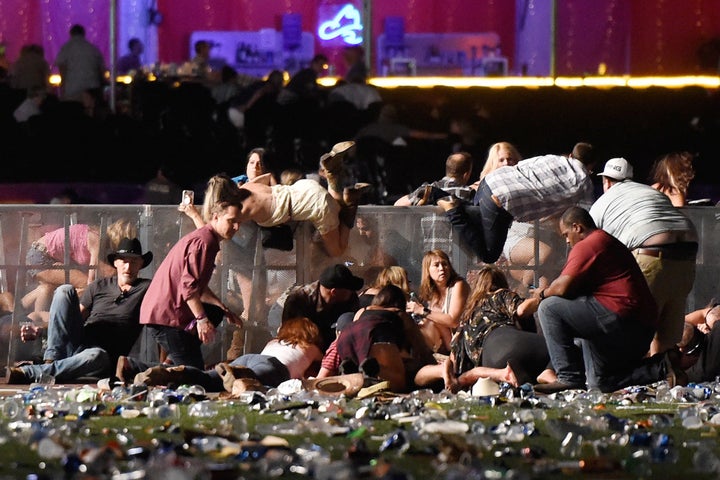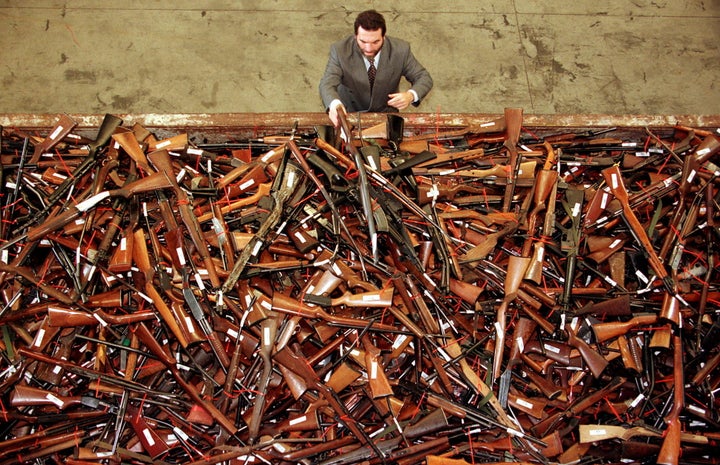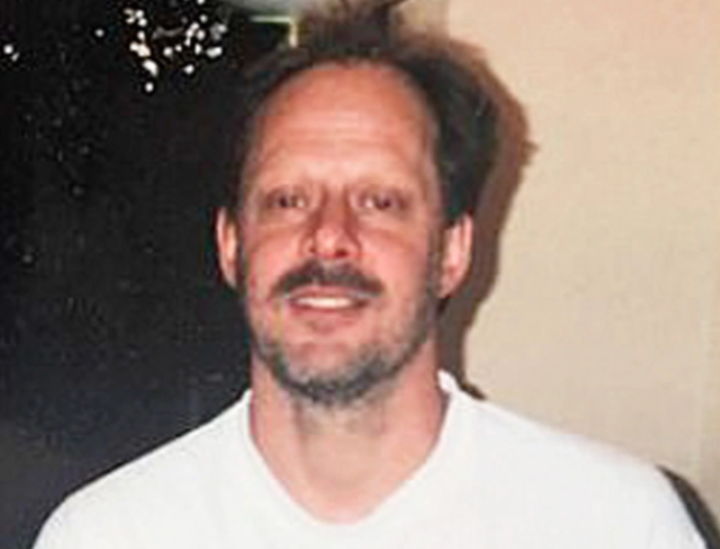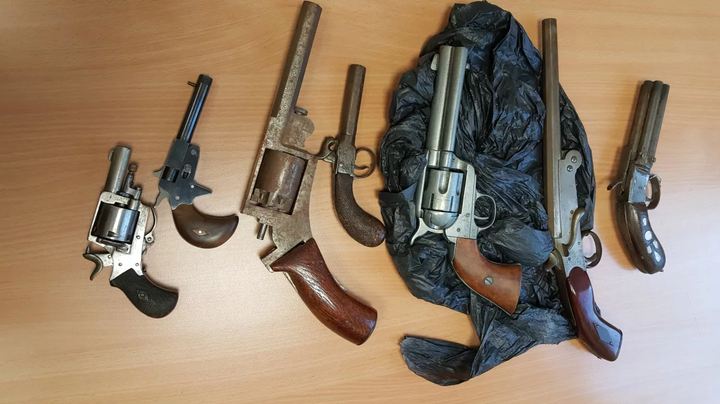As debate again rages around gun laws in the US and citizens’ Second Amendment right to bear arms - in the wake of the country’s worse ever mass shooting at the hands of a man who amassed a cache of 40-plus weapons - in Australia, its citizens have willingly relinquished their guns - in the thousands.
On Sunday as 22,000 concertgoers enjoyed the final night of a country music festival near the Las Vegas strip, Stephen Paddock smashed a window in his 32nd floor hotel room and used multiple weapons to unleash a reign of terror that claimed 59 lives and left some 500 injured.
Police recovered 23 guns from the 64-year-old’s room at the Mandalay Bay Resort and Casino - where he later took his own life - and another 19, along with explosives and ammo, at his house in Mesquite, Nevada. Several pounds of ammonium nitrate, a chemical used to make explosives, was earlier found in his car.

The Las Vegas massacre reignited debate around gun control which former President Barack Obama said, almost five years ago, the US “can’t tolerate” anymore.
Despite the bloodshed, on Monday gunmakers saw a boom in their stock prices: American Outdoor Brands Corp (previously Smith & Wesson), Sturm, Ruger & Co, and Vista Outdoor climbed by 2.3%, 3.7% and 1.4%, respectively, in morning trade, according to MarketWatch.
Gun shares often rise immediately after a mass shooting. In fact, American Outdoor Brands has repeatedly told investors that “speculation surrounding increased gun control at the federal, state, and local level and heightened fears of terrorism and crime” affects demand.
Gunmakers made millions after the mass shootings in Newtown, Connecticut; San Bernardino, California; and Orlando, Florida. The motive is fairly clear: When people get scared, they look for and buy things (eg, guns) to protect themselves. One study in California found that handgun sales after a mass tragedy, at least in one case, spiked even more among people who lived close to the event.

In the aftermath of the Las Vegas tragedy, US Senator and former presidential hopeful Bernie Sanders lamented there had been “been more mass shootings than days this year” in America.
Meanwhile, in Australia, just days before Paddock’s killing spree, authorities announced that 26,000 firearms had been surrounded to them during a three-month national gun amnesty.
The amnesty allows Australians with unregistered, illegal or unwanted firearms to hand them into their local authorities, without penalty or prosecution.
Australia’s gun stance success was highlighted in the wake of the Las Vegas massacre, with singer John Legend being among commentators posting about the country in a message tinged with futility.
Australia has not had a mass shooting in over a decade after bringing in strict and controversial gun laws including a weapons buyback scheme and banning semi-automatic rifles and shotguns.
The law-change came in the wake of 35 deaths in Port Arthur, Tasmania, in 1996, at the hands of a lone gunman armed with an assault rifle.
Comparatively, in Nevada - like in most US states - it is legal to openly carry long guns, like rifles and shotguns, without a permit.
For instance, people can sling a military rifle over their shoulder and take a stroll along the Las Vegas strip.

It’s also legal in Nevada to own a fully automatic firearm, such as a machine gun, though federal regulations require owners to pay a $200 fee and submit to an extensive federal background check and fingerprinting. That can take up to a year to complete.
This weaponry is regulated under the National Firearms Act. Some states have laws specifically restricting machine guns, but most don’t.
Australia’s gun laws are often held up internationally as an example of how gun control legislation can work and had been the focus of a John Oliver TV special on The Daily Show.

The recently-closed amnesty, a federal government initiative, was the first national scheme of its type since the Port Arthur shooting.
“The fact (is), we’ve got a deteriorating national security environment,” federal justice minister Michael Keenan said when announcing the amnesty in June.
“We’ve got an environment where there has been five terrorists attacks on our soil and sadly in the vast majority of those cases it has been an illegal firearm that’s been used.
“This is an opportunity for people to present the guns to authorities, no questions asked and with no penalty.”
In the UK the Metropolitan police has regularly held amnesties - which it calls surrenders - but with less success that their Australian counterparts.

The last one, in February, netted just 83 guns - 3 pistols, eight shotguns, one rifle (AK47), 40 air weapons/BB guns and 21 imitation guns.
More than a thousand rounds of ammunition was also relinquished, but Detective Chief Superintendent Jim Stokley, of the Met’s Trident and Area Crime Command, still called the public response to the week-long initiative a “fantastic response”.
During the previous surrender, in November 2015 - which lasted twice as long - saw 10 live firing weapons handed in as well as 37 air weapons, 17 imitation weapons and 1,270 rounds of ammunition.
The Met told HuffPost UK that it was not sure when the next surrender would take place.
The Met refers to the weapons initiative as a surrender, rather than an amnesty, as the ‘amnesty’, police explained, only exists at the “point of surrender of the firearm to lawful authority, not for the lifetime of the firearm”.
“This is a ‘firearms surrender’ and not a general firearms amnesty for the lifetime of the firearm. Police will continue to investigate the history of the firearm, and, if they can prove use/misuse of the firearm prior to surrender, to bring a prosecution.”
